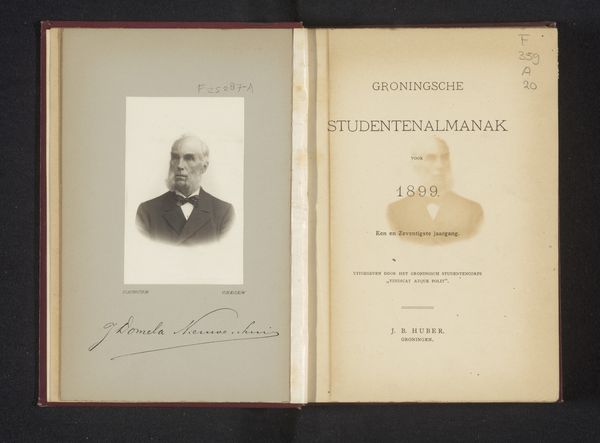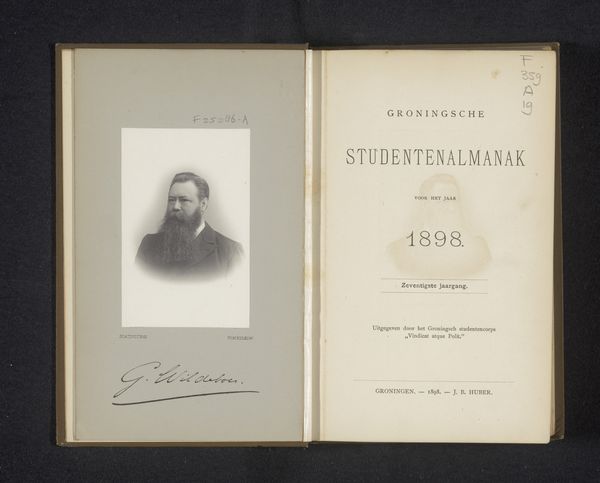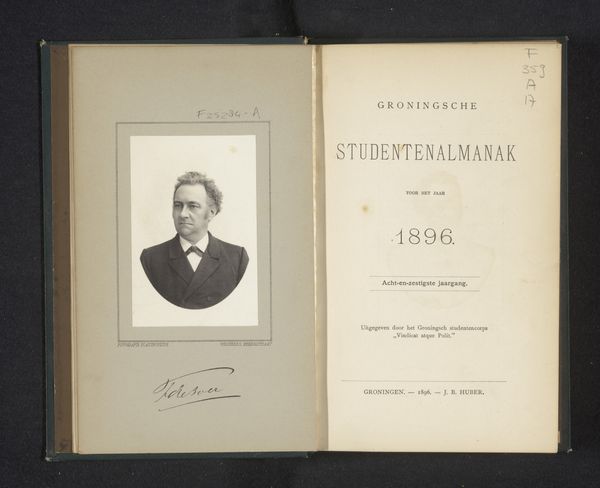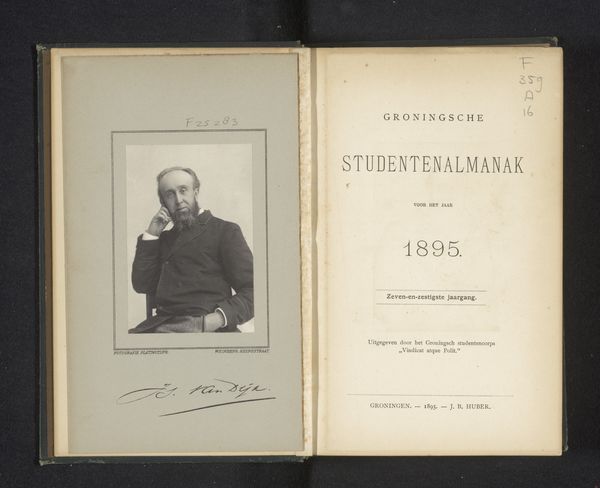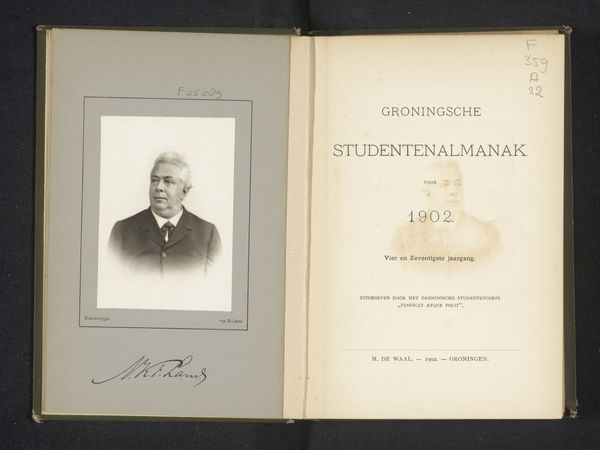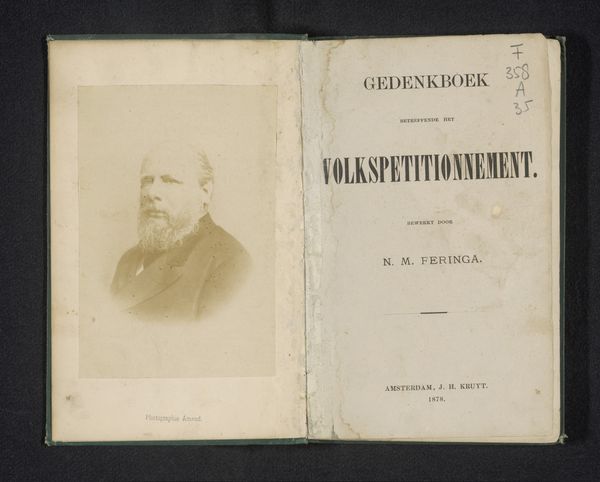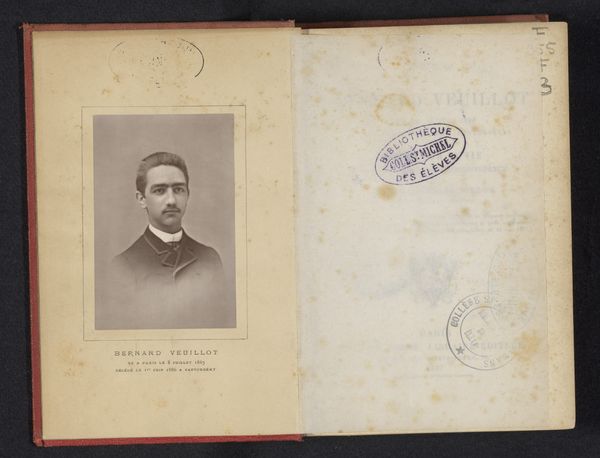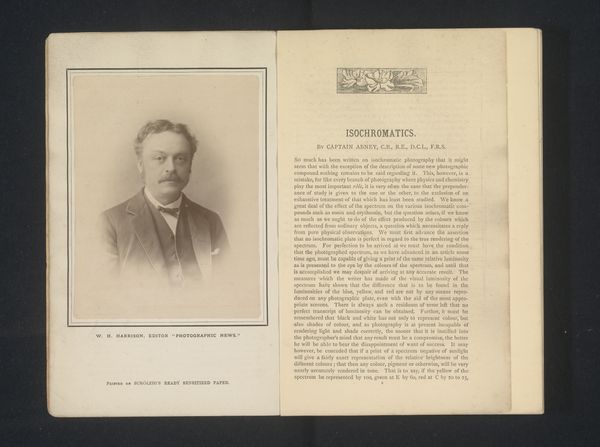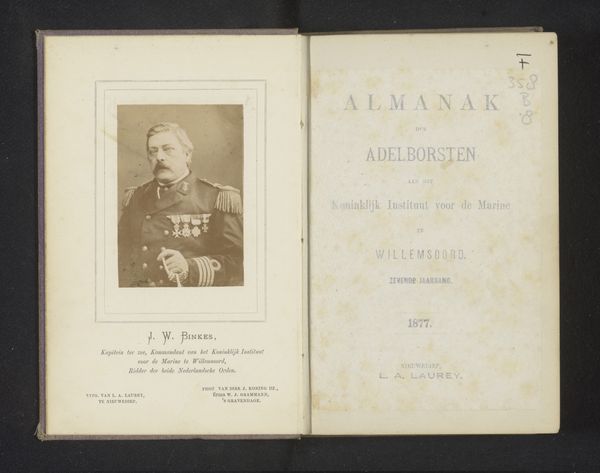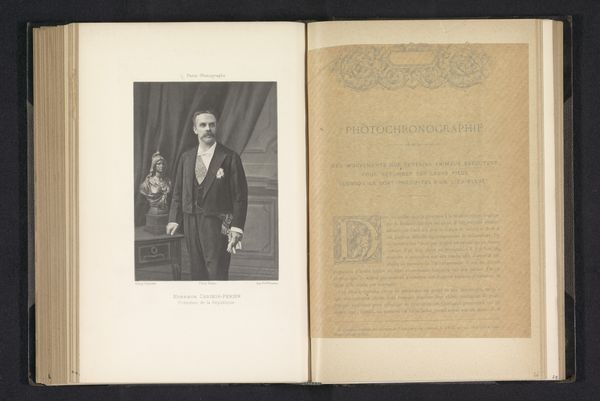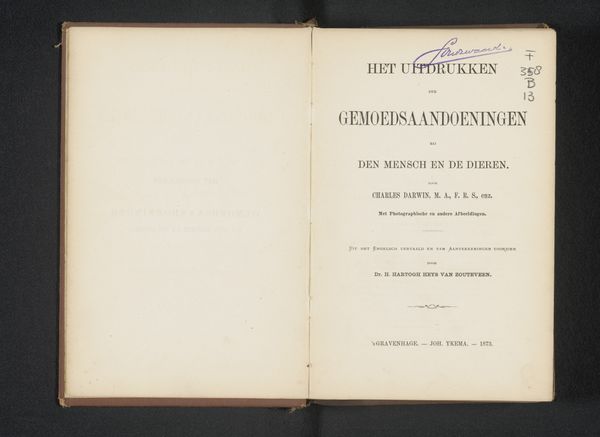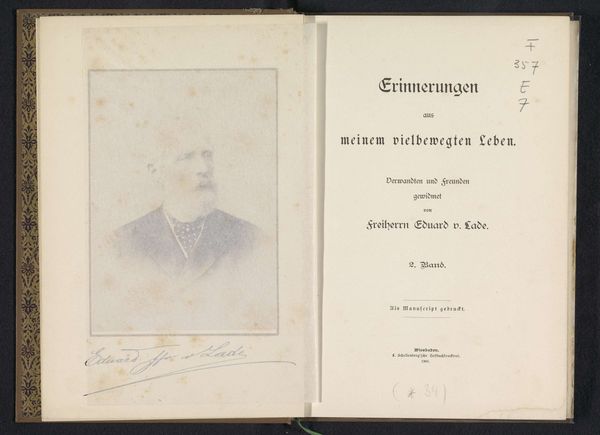
print, photography
#
portrait
#
aged paper
#
art-nouveau
#
homemade paper
#
paper non-digital material
#
paperlike
# print
#
book
#
sketch book
#
personal journal design
#
photography
#
folded paper
#
letter paper
#
paper medium
#
design on paper
Dimensions: height 196 mm, width 144 mm, thickness 25 mm
Copyright: Rijks Museum: Open Domain
Editor: So, here we have the "Groninger Studenten Almanak voor het jaar 1903," published in 1903. It looks like a printed photograph, or perhaps a photo of a print, capturing an opened almanac. It gives me a nostalgic, sepia-toned feeling, like peering into a bygone era of academia. What symbols or images do you find most striking here? Curator: The open book itself is, of course, the primary symbol, representing knowledge, but let’s consider *what* kind of knowledge. Almanacs historically blended practical information—astronomical data, tide tables, planting schedules—with literary content. In the context of students, what sort of guidance might such a book have provided in 1903? Editor: Maybe it contained practical student tips alongside literary musings? Curator: Precisely! Think of the portrait as well, facing this textual guide. Portraits freeze a specific person into a specific time, holding cultural weight, class identity, aspirations. Editor: I didn’t even think of that… the way the portrait on the left page mirrors the title page of the almanac is really compelling now. The gentleman seems important; it is right next to the title. Curator: Look at the style. Art Nouveau influenced graphic design: those curling, organic lines framing the photograph mimic growth, evoking a sense of flourishing intellectual life within the university. What message do these Art Nouveau embellishments send, do you think? Editor: Hmm… it seems to add a layer of sophistication. Like, education isn’t just rote memorization; it is cultivating oneself aesthetically, enriching life in every way. Curator: Exactly. It speaks to the ideals and aspirations these students would have held, how they saw their education not just as a means to a job, but as a transformation of self. Editor: I never thought of it that way. Seeing the cultural symbolism makes me appreciate how the object isn't simply a book; it is an entire cultural moment captured and communicated visually!
Comments
No comments
Be the first to comment and join the conversation on the ultimate creative platform.

